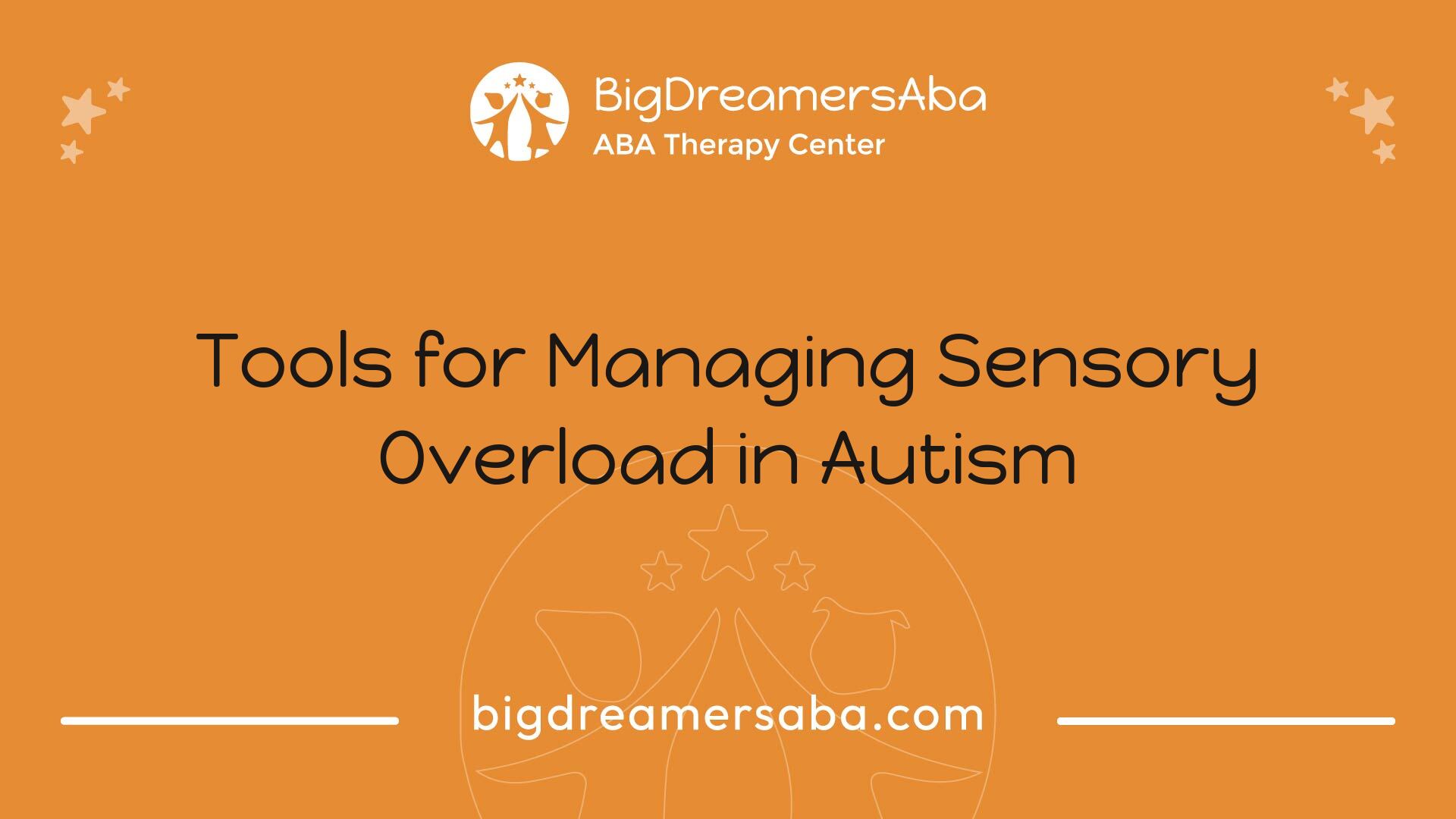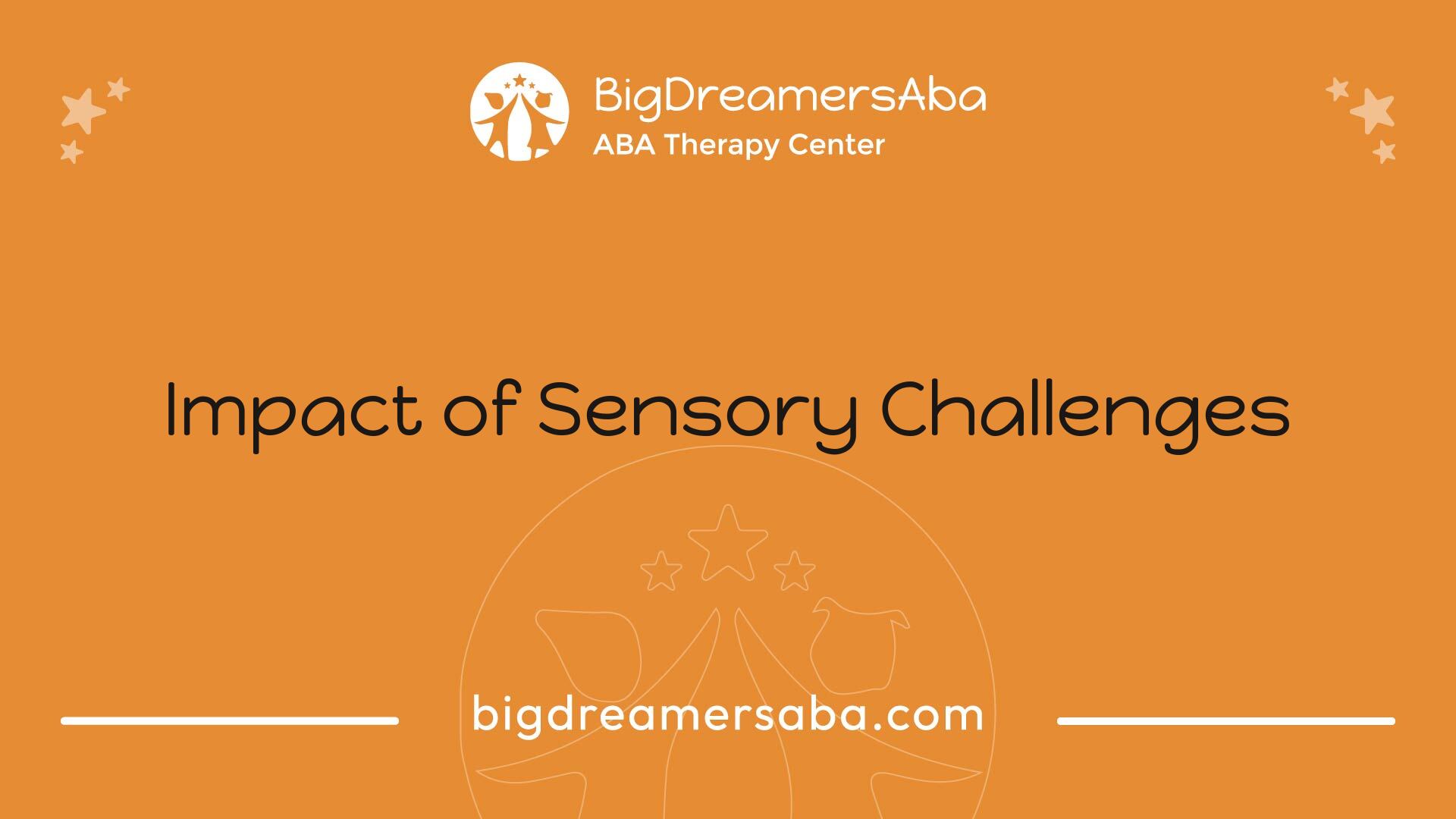Tools for Managing Sensory Overload in Autism
Explore effective strategies for managing sensory overload in autism and create a supportive environment.


Sensory Challenges in Autism
Sensory Processing in Autism
Sensory processing issues are a central characteristic of Autism Spectrum Disorders (ASD). Research indicates that over 96% of children with ASD report experiencing hyper- and hypo-sensitivities across multiple sensory domains [1]. This variation in sensory responsiveness can significantly affect their day-to-day experiences and interactions with their environment.
Individuals with autism often display atypical sensory behaviors. Hyper-responsiveness may manifest as an intense aversion to certain sounds, textures, or lights, while hypo-responsiveness may lead to a lack of reaction to sensory stimuli that would typically elicit a response from others. This phenomenon is more pronounced in individuals with autism than in those with other developmental disabilities.
Sensory TypeHyper-SensitivityHypo-SensitivityTactileAvoidance of light touch and grooming activitiesReduced response to pain or temperatureAuditoryOverwhelmed by loud noises or certain soundsUnbothered by loud environmentsVisualDistress from bright lights or certain colorsLack of interest in visual stimuliOlfactoryStrong aversion to certain smellsLack of reaction to unpleasant odors
Tactile sensitivity is one of the most commonly reported issues among individuals with ASD. Many express discomfort with light touch and grooming-related activities, which has gained attention in sensory therapy discussions. Nonetheless, it is often overshadowed by auditory sensitivity issues in existing research.
Understanding how individuals with autism process sensory information is crucial for developing effective strategies to support them. Sensory integration therapy, for example, has demonstrated significant benefits by improving sensory processing skills, enhancing overall daily functioning, and increasing participation in activities. This therapy helps individuals develop coping strategies to better manage overwhelming sensory experiences, which is essential for managing sensory overload in autism.
For further insights into sensory challenges and effective tools, check out our resources on creating a sensory-friendly environment and the various approaches to addressing sensory aversion in autism.

Sensory Responsiveness in Autism
Sensory responsiveness in individuals with autism can be complex and varied. Understanding hyper- and hypo-sensitivities, as well as selective attention difficulties, is essential for addressing their unique sensory experiences.
Hyper- and Hypo-Sensitivities
Individuals with autism may exhibit either hypersensitivity or hyposensitivity to various sensory stimuli. Hypersensitivity refers to an excessive response to sensory input, while hyposensitivity is characterized by an underwhelming response to stimuli. This can affect multiple sensory systems, including auditory, visual, tactile, olfactory, gustatory, and proprioceptive systems.
The following table summarizes the characteristics of hypersensitivity and hyposensitivity:
Sensitivity TypeDescriptionExamplesHypersensitivityOver-responsiveness to sensory inputsDiscomfort from bright lights, avoidance of certain textures, strong reactions to soundsHyposensitivityUnder-responsiveness to sensory inputsSeeking out strong smells or tastes, needing intense sensory stimulation to notice sensations
Physical signs of sensory overload can include sensitivity to noise and lights, which may lead to distress or avoidance behaviors. Some individuals even exhibit self-harming actions like head banging or ear-clapping when overwhelmed.
Selective Attention Difficulties
Selective attention difficulties in individuals with autism can impact their ability to filter relevant sensory information from the numerous stimuli present in their environment. Their challenges may include focusing on a conversation in a noisy setting or ignoring background distractions. This can hinder their engagement in social situations.
Research shows that individuals with autism may have impairments in processing dynamic noise and motion coherence, which could relate to difficulties in understanding emotional cues that inform sensory processing [1]. Consequently, these difficulties can lead to frustration and hinder social interaction.
Effectively managing sensory overload in autism involves strategies and tools to create a sensory-friendly environment. For more on creating supportive settings, visit our article on creating a sensory-friendly environment. Understanding these nuances of sensory responsiveness can aid caregivers and professionals in providing appropriate support and interventions for individuals with autism.

Common Sensory Issues in Autism
Individuals with autism often face unique sensory challenges. These issues can significantly affect their daily lives and overall well-being. Two prominent sensory challenges among this population include tactile sensitivity and difficulties in processing emotional information.
Tactile Sensitivity
Tactile sensitivity is frequently reported in individuals with autism spectrum disorder (ASD). Many complain about avoiding light touch and grooming-related activities, which can lead to discomfort [1]. This sensitivity varies widely; some individuals may prefer minimal touch, while others may seek extra pressure to feel secure.
Sensitivity TypeDescriptionHypersensitivityAvoids light touch, experiences pain or discomfort with grooming.HyposensitivityRequires extra pressure to feel calm (e.g., benefits from weighted blankets) [4].
Tactile sensitivity issues can significantly impact personal care routines, social interactions, and other daily activities. Adjusting environments and routines may alleviate some discomfort related to tactile sensitivities.
Processing Emotional Information
Processing emotional information is another common sensory issue faced by individuals with autism. They may struggle to interpret non-verbal cues, such as facial expressions and body language, leading to misunderstandings and emotional distress. This difficulty can manifest in various situations, often causing anxiety or withdrawal when faced with strong emotions in others or themselves.
Research indicates that individuals with autism often experience hypersensitivity and hyposensitivity across multiple sensory modalities, which affects their responses to social situations. The cumulative effect of these challenges can result in sensory overload, leading to increased stress, anxiety, and potentially physical pain.
Understanding these common sensory issues is crucial for developing effective strategies for managing sensory overload in autism. By recognizing the specific challenges individuals face, caregivers and professionals can create supportive environments that promote comfort and well-being.

Impact of Sensory Challenges
Sensory challenges significantly affect individuals on the autism spectrum, influencing various aspects of their daily lives. Understanding these impacts can help in managing sensory overload in autism.
Behavioral Effects
Sensory overload can lead to a range of behavioral challenges. When faced with overwhelming stimuli, individuals may experience anxiety, leading them to engage in avoidance behaviors or exhibit intense meltdowns. Physical responses to sensory overload can include signs such as sensitivity to noise, hypersensitivity to lights, and avoidance of certain textures or smells. Some may also express discomfort through self-harming behaviors, which can manifest as head banging, ear-clapping, or self-scratching.
In a study examining sensory processing concerns, it was found that over 96% of children with autism experience hyper and hypo-sensitivities across various sensory domains [1]. The prevalence of these issues highlights the importance of recognizing and addressing behavioral cues related to sensory overload.
Common Behavioral ResponsesDescriptionMeltdownsIntense emotional outbursts triggered by overwhelming stimuli.AvoidanceSteering clear of situations or environments that may trigger discomfort.StimmingEngaging in repetitive movements or sounds to self-soothe and manage sensory input.
Cognitive and Social Implications
Sensory processing challenges can hinder cognitive functioning and social interactions. Difficulties in focusing and learning may arise due to sensory overload, impacting academic performance and self-care tasks. Moreover, social isolation can occur when individuals struggle to navigate social situations that become overwhelming due to heightened sensory sensitivities.
These cognitive and social implications can lead to a cycle of frustration and avoidance, further disconnecting individuals from their peers and limiting opportunities for social engagement. The use of behaviors like stimming as coping mechanisms may become more pronounced, but suppressing these behaviors, particularly in professional settings, can exacerbate problems of self-regulation, leading to increased exhaustion or burnout [7].
Cognitive and Social ChallengesImpactDifficulty focusingImpacts learning and academic performance.Social isolationLimits opportunities for social interaction and support.Increased anxietyHeightens the likelihood of sensory overload and withdrawal.
Understanding the influences of sensory challenges on behavior and cognition can aid caregivers, educators, and healthcare providers in creating supportive environments tailored to individual needs. For strategies on enhancing sensory experiences, consider exploring our resources on sensory table ideas for autism and creating a sensory-friendly environment.

Sensory Integration Therapy
Purpose and Methodology
Sensory Integration Therapy is a commonly utilized approach aimed at addressing sensory processing challenges faced by individuals with autism. This therapy focuses on enhancing sensory processing skills and improving daily functioning by offering tailored sensory experiences in a controlled and structured environment.
The methodology of Sensory Integration Therapy involves a variety of activities that are designed to stimulate the senses. These activities can include swinging, bouncing, or using sensory toys. The therapist assesses the individual's specific sensory needs and creates a personalized plan that incorporates these sensory experiences. The goal is to help individuals learn to manage sensory overload and improve their overall sensory responsiveness.
Therapy ComponentDescriptionAssessmentEvaluating the individual's sensory processing challengesCustomized ActivitiesTailoring sensory activities to meet personal needsStructured EnvironmentCreating a safe and controlled space for sensory experiencesSkill DevelopmentTeaching strategies for sensory regulation and adapting to sensory input
Benefits and Outcomes
Sensory Integration Therapy has demonstrated significant advantages for individuals with autism. Research shows that it can enhance sensory processing abilities, increase daily functioning, and foster independence. Many individuals experience improved social interactions and participation in various activities. It equips them with strategies to better regulate their responses to sensory stimuli, thus easing sensory overload.
Furthermore, studies indicate the therapy may reduce self-stimulatory behaviors and enhance functional behaviors such as social interaction and play [8].
OutcomeDescriptionImproved Sensory SkillsEnhances the ability to process and respond to sensory inputEnhanced Daily FunctioningSupports better performance in daily tasks and activitiesIncreased IndependenceFosters self-sufficiency in managing sensory experiencesBetter Social InteractionsEncourages participation and interaction with peers
In conclusion, Sensory Integration Therapy provides a valuable framework for managing sensory overload in autism, promoting a healthier and more engaged lifestyle. For more information on sensory management strategies, consider exploring resources on creating a sensory-friendly environment or addressing sensory seeking in autism.
Managing Sensory Overload
In the context of autism, managing sensory overload is critical for enhancing the well-being of individuals. This can be achieved by understanding sensory needs and creating supportive environments.
Sensory Needs in Autism
Individuals with autism often experience sensory overload, which can manifest as sensitivity to noise, hypersensitivity to lights, and avoidance of specific textures and smells. Such physical signs can lead to self-harming behaviors like head banging or self-scratching, making it crucial to recognize each individual's unique sensory needs.
To help manage these sensory needs effectively, several tools and strategies can be implemented:
Sensory NeedManagement TechniquesNoise SensitivityNoise-canceling headphones, calming musicLight SensitivityDim lighting, using glasses with anti-glare lensesTactile SensitivityChoosing soft, comfortable clothing, avoiding scratchy textures
Calming techniques, along with effective communication and collaboration with caregivers, are essential for helping individuals cope with sensory challenges. Understanding how to structure environments and interactions can lead to a reduction in stress and anxiety for those affected.
Creating Supportive Environments
Creating a 'sensorily safe' environment for autistic individuals can significantly lower stress levels and facilitate easier navigation through daily life. Accommodations that minimize exposure to overwhelming stimuli enhance learning and social interactions [10].
Key strategies to create supportive environments include:
Autistic individuals may develop their own strategies for managing sensory input, such as mono-processing, which involves focusing on one sense at a time [10]. This strategy allows them to minimize distress and improve overall comfort in various settings.
Ultimately, acknowledging the unique sensory experiences of autistic individuals and adapting environments accordingly can foster a supportive atmosphere that caters to their sensory needs effectively. For additional resources on sensory aids, consider learning about sensory toys for autism and creating a sensory-friendly environment.
References
[2]:
[3]:
[4]:
[5]:
[6]:
[7]:
[8]:
[9]:
[10]:
Recent articles

How ABA Therapy Can Help Improve Focus and Attention in Children

Why ABA Therapy is the Gold Standard for Autism Treatment
